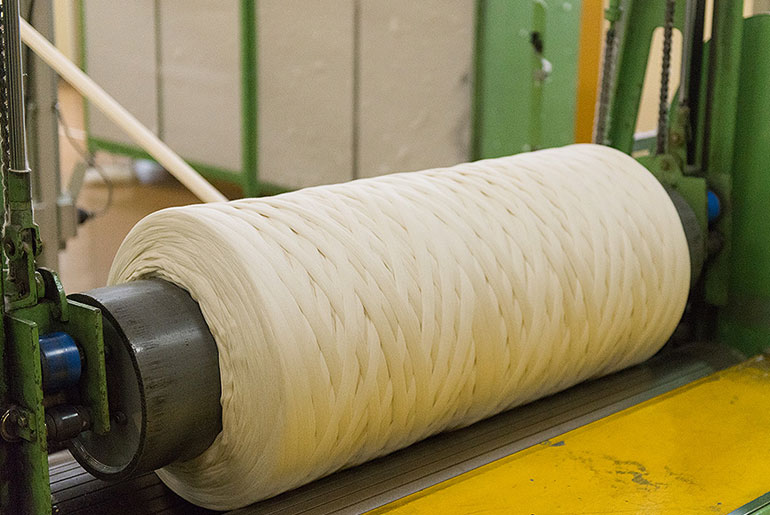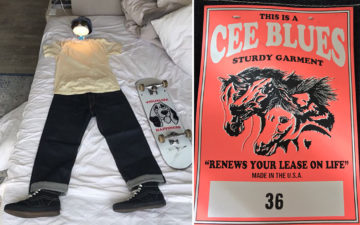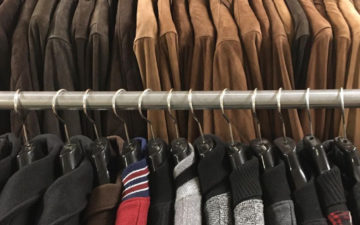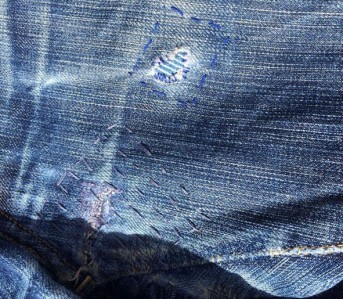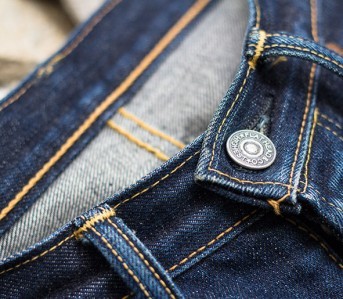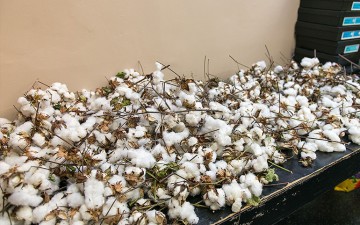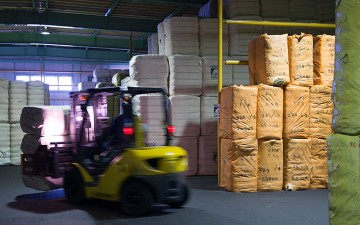We’ve translated and reformatted Japanese brand Workers’ six part feature on the denim production process From Cotton to Jeans. In Parts III and IV, they discuss the rope-indigo dyeing and shuttle weaving stages. Click here to start from the beginning.
Part III
Rope Dyeing
The spools of thread enter a process called warping. The origins of the term “rope dyeing” originate in the act of gathering the threads into bunches, like ropes. On the left side of the picture, you can see the “ropes” consisting of hundreds of threads, but the machine and the specialized knowledge necessary to use it prevent us from photographing it.
The threads are rolled together to prevent breakage and tangling, which requires careful human oversight. As we observed the process, we noticed that the machine required frequent stops and fine adjustments.
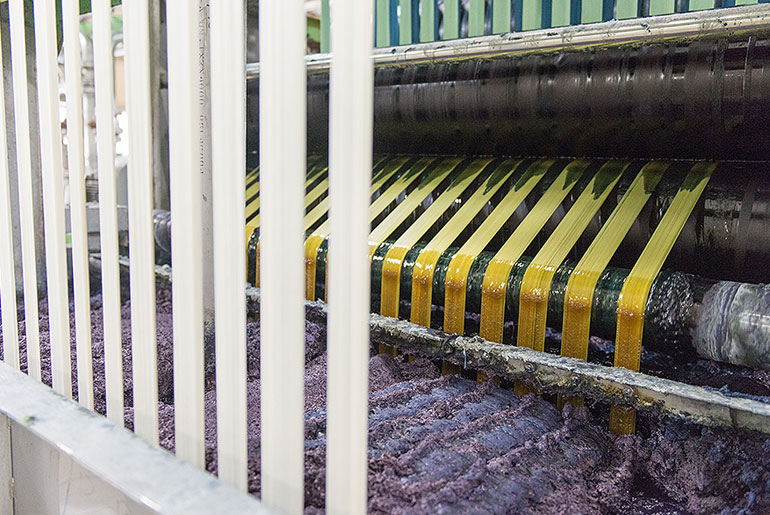
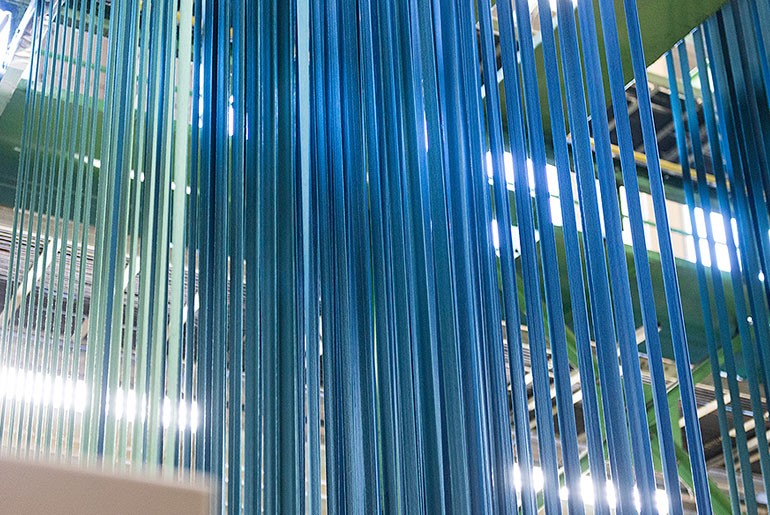
The dyeing is only performed using pure indigo. The pure white thread is passed through a tub full of indigo, and appears yellowish right after it is removed. But when exposed to air, the oxidation turns the color to blue. Depending on the desired color, the ropes are dipped in the indigo tub many times, at controlled speed and depths.
There may also be variations depending on whether the thread is dyed before or after weaving. Basically, the rope dyeing process allows for a large volume of thread to be dyed. Whether the dyeing involves a few thousand meters or tens of thousands of meters of thread, the time and labor involved remain the same.
Rolling/Starching
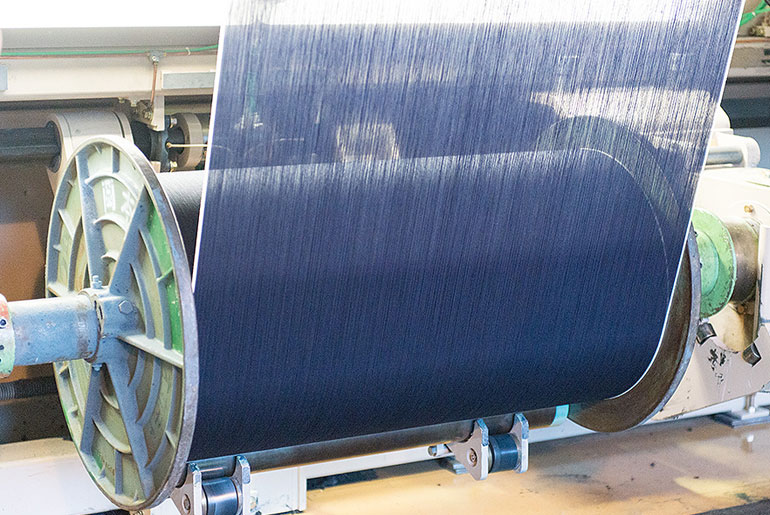
The rope-dyed thread is rolled around a large beam to create a spool of thread, but because the exact method of doing this is a trade secret, we can’t show pictures of the process. This photo shows the spooled thread after it’s been starched and is hooked up to the loom. Each brand and fabric is used for a specified number of pairs, and the thread must be rolled correctly to prevent any mistakes.
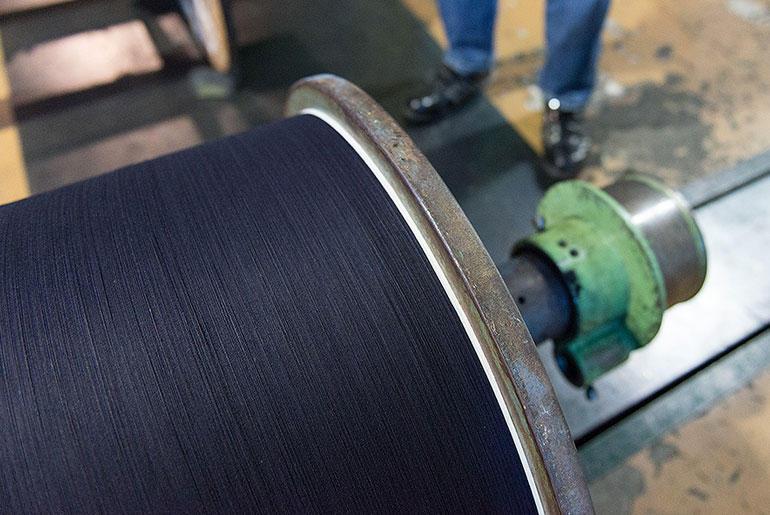
Here, the spool of thread has just been attached to the loom. At the edge, you can see the white thread that will make up the selvedge line after weaving. Because the dyed thread will be inserted into the loom after the spool is attached, at this stage the edge is white. Each individual thread is separated during the starching process. If the starching isn’t done well, it won’t even be possible to make the fabric on the loom.
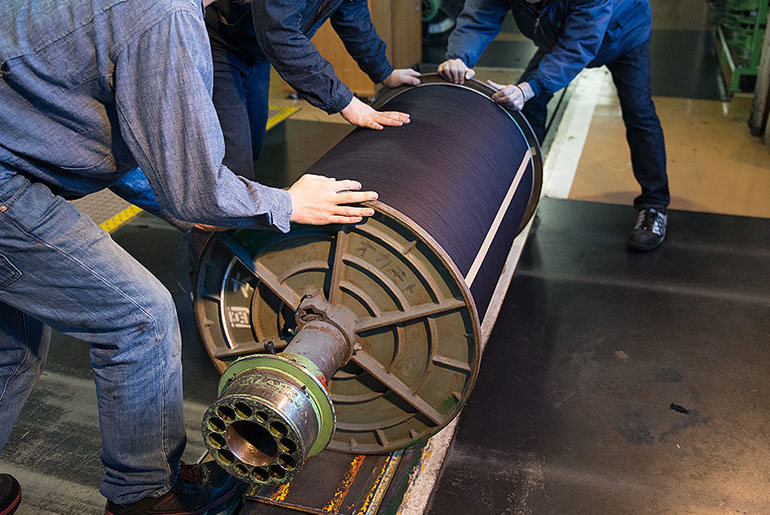
The wrapped-up warp threads are detached from the machine and transported by pulley to the shipment location. For a narrow-width shuttle loom, this is a considerable amount of thread – enough to weave over 500 meters of fabric. From here, a forklift will place the spools on a delivery truck and ship them to their destination.
Part IV
Weaving the Fabric
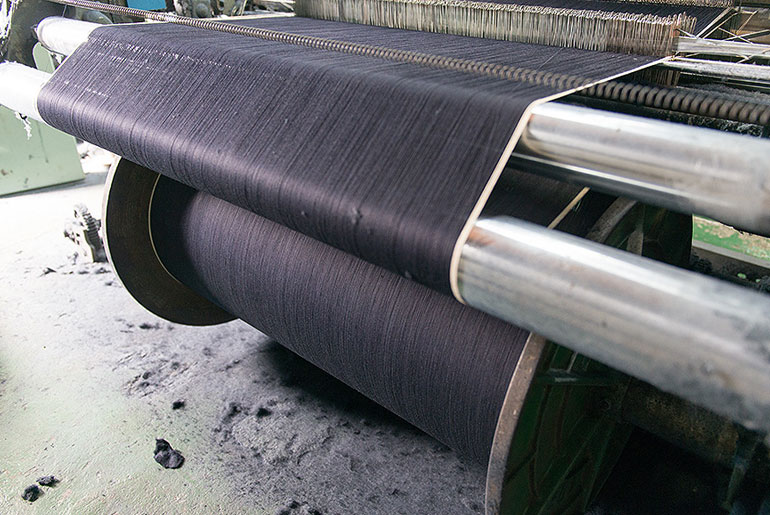
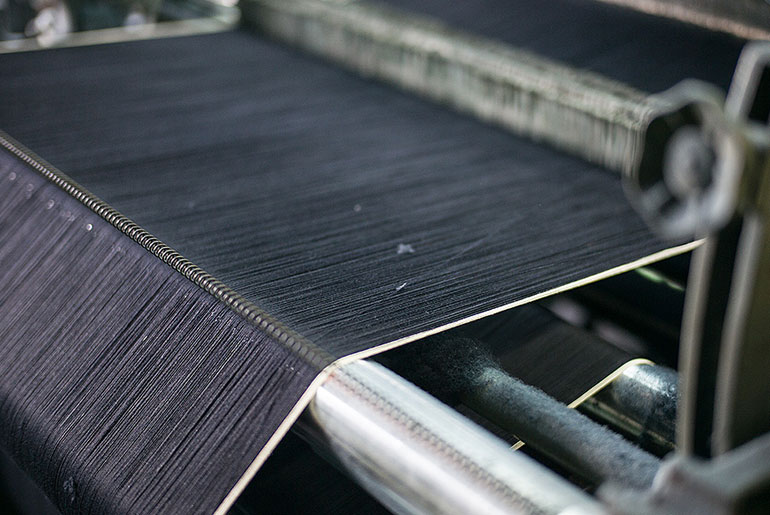
After being rolled up into a spool at the dyeing facility, the indigo threads are ready to be woven on the shuttle loom. This is a unique characteristic of denim. Wool used to be considered the most important fabric woven at such mills, but the manufacture of denim, with its indigo rope-dyed warp threads, uses different manufacturing process than other fabrics.
The process of setting the warp threads into the machine is very challenging, and the threads need to be carefully combed in order to avoid breakage during weaving.
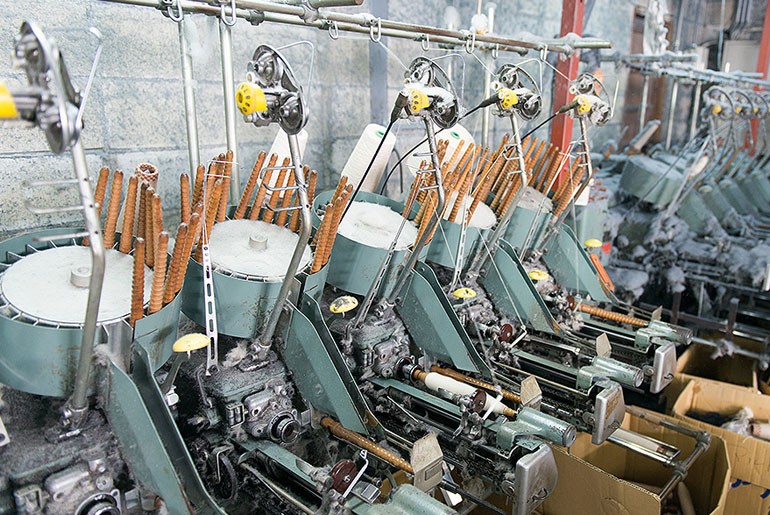
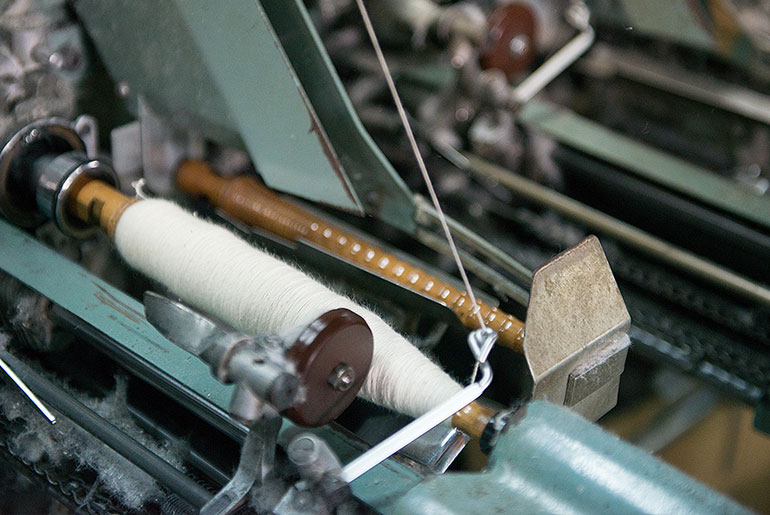
The undyed weft threads are transported to the facility and then set into the shuttle. Both the warp threads and weft threads are spooled, but after that each are used for different processes in making the denim. In modern projectile looms, the weft thread is not sewn using a shuttle; instead, water or air jets propel the cone of thread.
In other words, the modern machines don’t require the cone of thread (several thousand meters in length) to be changed out. But in a shuttle loom, the thread is wrapped around the shuttle, and every time the shuttle runs out of thread, the shuttle needs to be exchanged. If you carefully observe the selvedge line, you can see the points at which the shuttle is exchanged.
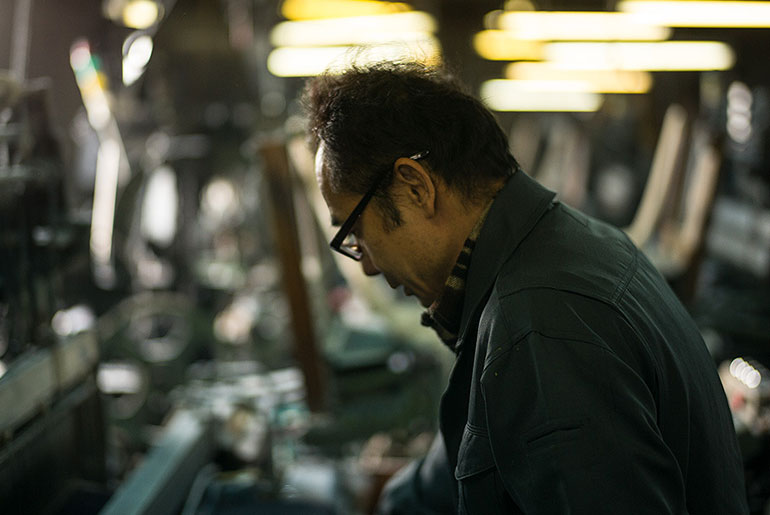
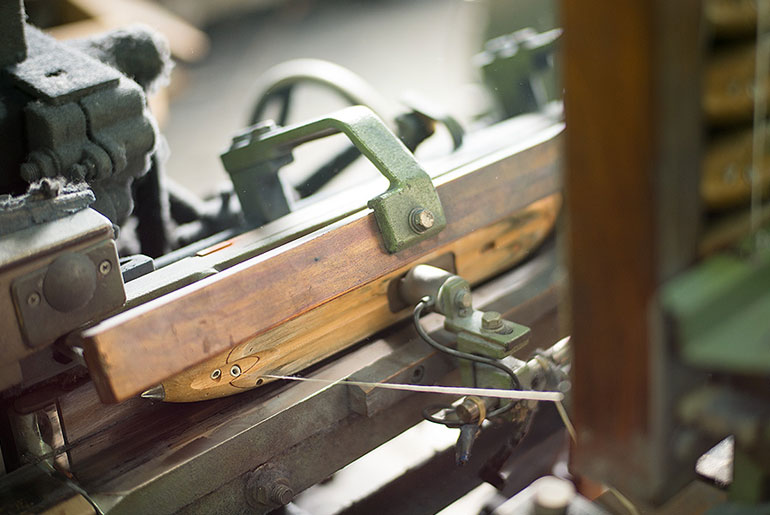
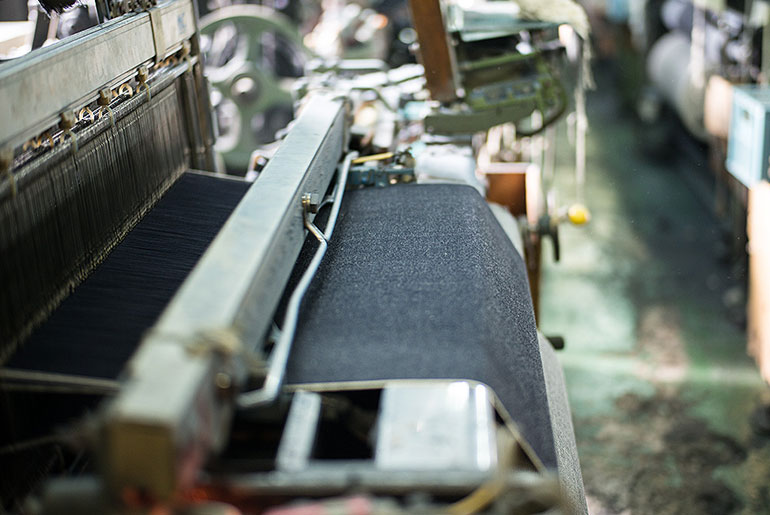
K-san is confirming the tension on the shuttle loom. Since the beginning, he’s woven the completely custom selvedge fabric in Workers’ jeans. As soon as we see his face, he asks, “How can I weave this at even lower tension while avoiding flaws in the fabric?”
By weaving at the lowest tension possible, we can preserve the original, uneven feel of the threads. The picture below shows the fabric after the shuttle has just been changed; every time the shuttle is changed, the loom must be stopped.
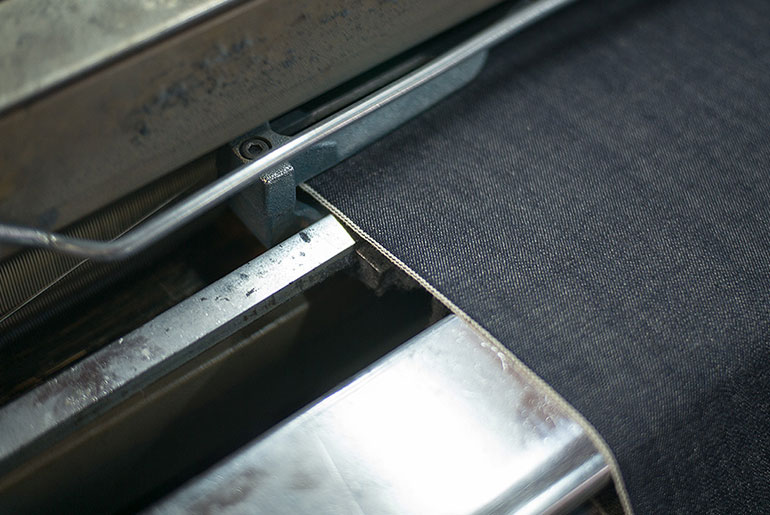
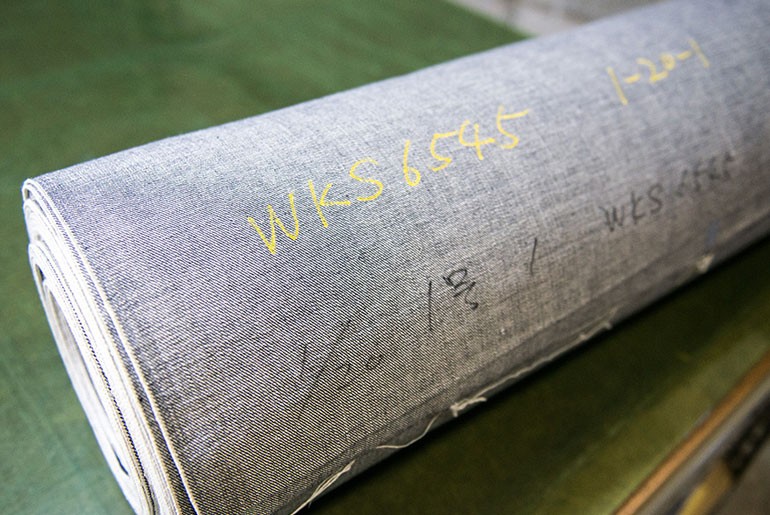
On the selvedge line, there is a single rope-dyed indigo thread in the center. It’s unfortunate that we can’t show it by video, but the fabric is woven at the slowest speed possible. K-san’s loom doesn’t run very quickly to begin with, which helps us to create the the uneven feel of our denim.
In contrast, smooth denim without much variation to the texture is woven rapidly and at high tension. It all comes down to one’s personal preference and needs. Since we like the natural feel of a rough, uneven fabric, we prefer to weave our denim at low tension.
Check in soon for Parts V and VI of Workers’s series From Cotton to Jeans: Patterning and Sewing. All text and images courtesy of Workers.

